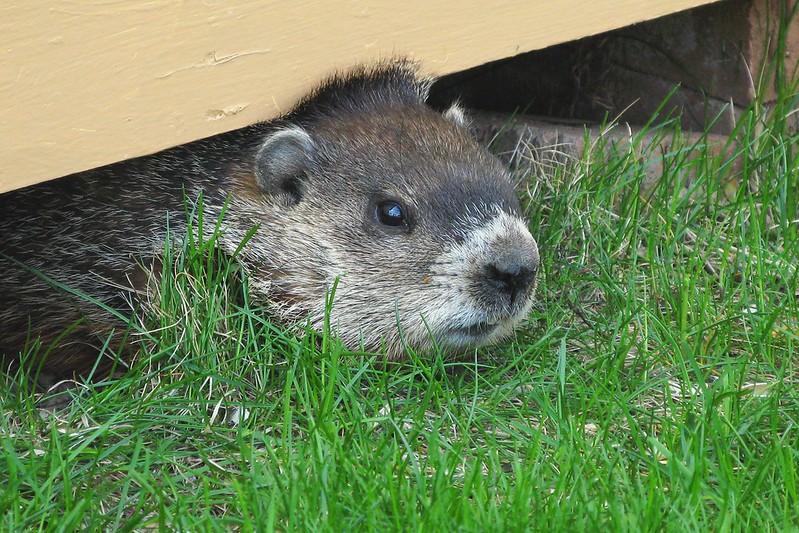
When woodchucks live nearby, you may need to solve two kinds of problems: they will often raid gardens, and their burrow systems can be large enough to threaten old stone foundations.
Here are some suggestions from the Humane Societyof the United States for encouraging woodchucks to relocate, keeping in mind that female woodchucks have dependent young in their burrows from late winter until spring or early summer:
Closing burrows
Before closing a burrow, first test for activity: Loosely plug all of the burrow entrances (there may be several) with grass clippings, newspaper, or similar material and monitor activity to determine if the burrow is currently vacant.
If, after three to five days in clear summer weather, the material has not been disturbed, you can assume the burrow is unoccupied.
Use heavy-gauge, welded fencing wire (with no larger than three-inch squares) to close burrows.
-
-
- Cut the wire into three-by-three foot sections.
- Center a section over each burrow entrance.
- Bury the fencing at least one foot deep.
- Pin it down if necessary with landscape staples.
-
Harassment
If the burrow system is occupied, harass the residents:
-
-
- Partially dig the entrance out.
- Clear vegetation away from entrances.
- Put some harmless but strong-smelling substance just inside the entrance (such as urine-saturated clumps of kitty litter).
- Loosely seal the entrance, so the smell stays inside the burrow.
-
Monitor the closed burrow every few days to make sure it’s not still occupied; when it is clear that the burrow is empty, you can permanently seal it.
Keep monitoring not only closed burrows but the rest of the yard, too. Immediately responding to any attempts to reopen old burrows or establish new ones is vital to preventing new burrows from popping up.
Fencing
Even though woodchucks are good climbers, you can protect your gardens with fencing. Fences work best when protecting relatively small areas. To be a successful barrier, a perimeter garden fence should at minimum:
-
-
- Be made of a chicken or welded wire with mesh size no bigger than three by three inches.
- Reach three to four feet above ground level.
- Have twelve to eighteen inches of unsecured fencing at the top so it wobbles as the woodchuck tries to climb it.
- Have an L-footer base that is buried or pinned to the ground or a single strand of electric fencing four inches off the ground and six inches in front (to prevent digging).
-
If you are building a more rigid fence, bend the top ten to fifteen inches outward at a 45-degree angle to create a barrier to help prevent climbing.
Electric fences will work as well, and often a simple single strand of electrified wire set four inches above the ground is enough to discourage visits. If not, you can add one more strand about nine inches from the ground. (Follow standard safety protocols when using electric fences.)
This chapter from the Humane Society of the United States publication, Wild Neighbors: The Humane Approach to Living with Wildlife by John Hadidion has additional information:
